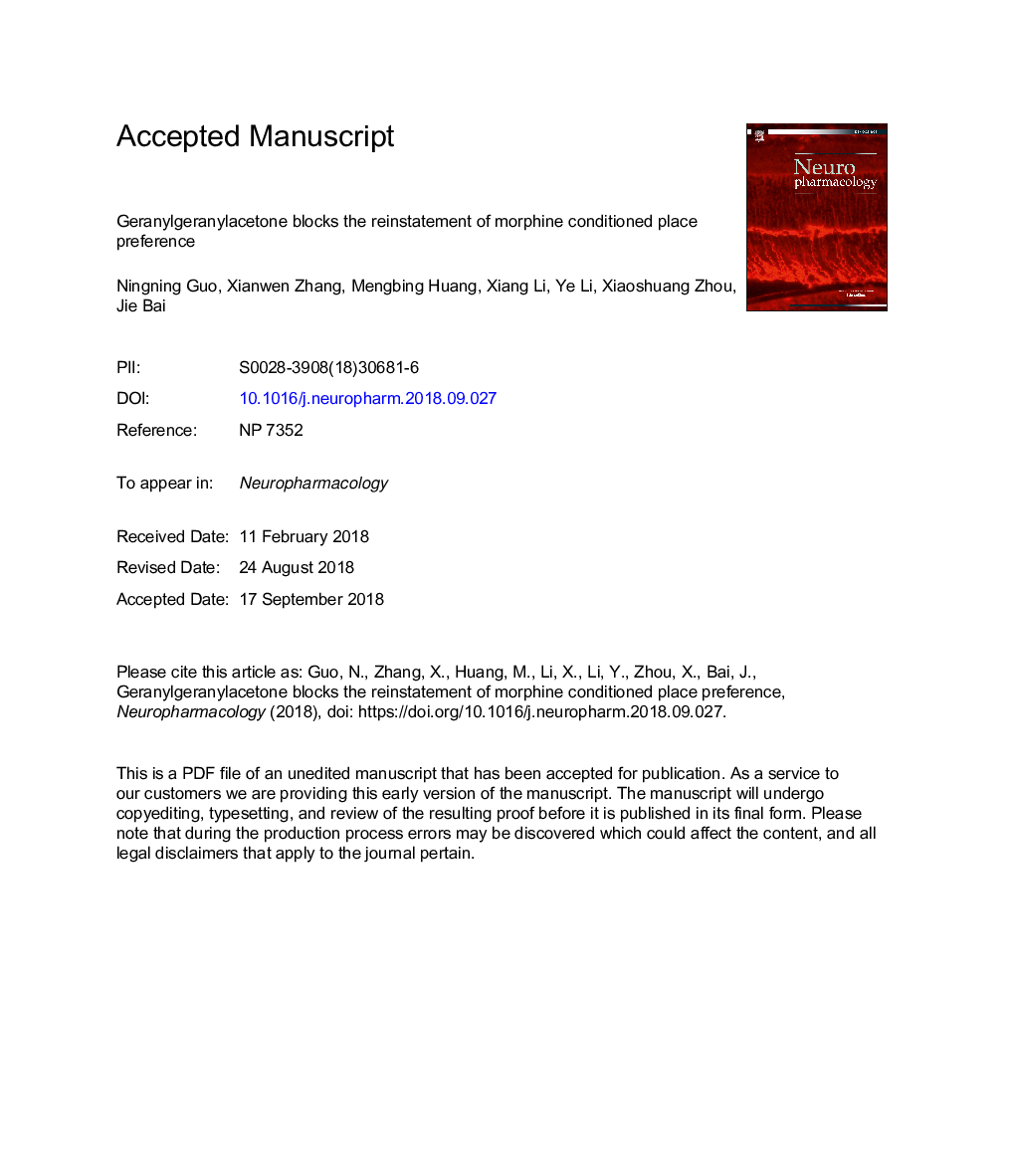| Article ID | Journal | Published Year | Pages | File Type |
|---|---|---|---|---|
| 10158240 | Neuropharmacology | 2018 | 29 Pages |
Abstract
Morphine is widely used for clinical pain management and induces the dependence. Addiction to morphine is a major public health issue. Geranylgeranylacetone (GGA) is widely used in clinic for treating ulcer. GGA induces expression of thioredoxin-1 (Trx-1) extensively. Trx-1 is a redox regulating protein and plays protecting roles in nervous system. GGA prevents mice against morphine-induced hyperlocomotion, rewarding effect, and withdrawal syndrome. However, whether GGA blocks morphine-conditioned place preference (CPP) reinstatement is still unknown. In the present study, we found that GGA administration blocked the reinstatement of morphine-CPP. The expressions of Trx-1, N-methyl d-aspartate receptor 2B subunit (NR2B), phosphorylated Ca2+/calmodulin-dependent protein kinase II (p-CaMKII), phosphorylated extracellular signaling regulated kinases (p-ERK), and phosphorylated cAMP-response element binding protein (p-CREB) were induced in nucleus accumbens (NAc) and hippocampus by morphine or GGA, whereas these proteins were not changed by morphine in GGA-treated mice. Our results indicate that GGA may prevent the reinstatement of morphine-CPP through strengthening the expression of Trx-1 and regulating NR2B/ERK pathway. Thus, we suggest that GGA may be a promising therapeutic candidate for morphine-induced relapse.
Related Topics
Life Sciences
Neuroscience
Behavioral Neuroscience
Authors
Ningning Guo, Xianwen Zhang, Mengbing Huang, Xiang Li, Ye Li, Xiaoshuang Zhou, Jie Bai,
